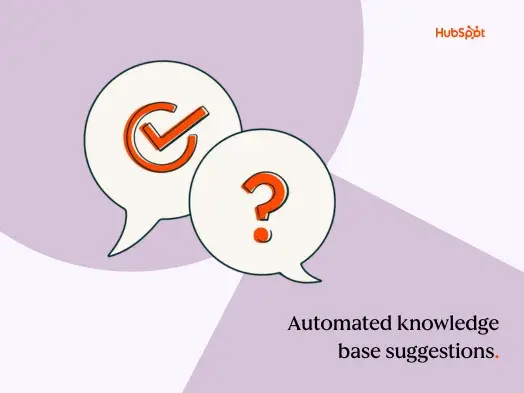But, what’s the difference between transactional customer service and modern, relational service?
In this article, we’ll explore what transactional customer service is and compare it to relational service. We’ll also examine how simple, yet impactful tactics — like using a customer’s name and other personalization techniques — can significantly alter the customer experience.
Table of Contents:
- What is transactional customer service?
- Transactional vs. Relational Customer Service
- Tips to Move From Transactional to Relational-Based Customer Service
What is transactional customer service?
In my professional journey, I’ve defined transactional customer service as the no-frills, get-it-done-and-move-on approach to customer service. It’s where customer interactions are seen as discrete, one-off transactions.

This method focuses on solving a problem quickly with minimal fuss or personal connection. Efficiency is king, and while this approach can keep the queue moving, it often overlooks the customer’s emotional journey and potential for relationship building.
From my experience, companies that rely solely on transactional service often fall into a pattern of reactive engagement, which can leave customers feeling undervalued and disloyal.
I’ve seen countless interactions resolve a customer’s issue without truly engaging or impressing them, leaving no memorable impression or incentive for the customer to return. This is why understanding why customer service is important is essential to the longevity of your brand.
Transactional Customer Service Example
Here’s one example of transactional customer service from former HubSpot support rep, Clint Fontanella.
When Clint transitioned from phone support to live chat, he noticed a change in his NPS. “I realized these support cases were much faster than phone calls. Customers wanted quick answers without as much context,” he said, “I needed to really establish a meaningful conversation with each customer if I wanted to provide above-and-beyond service.”
Transactional vs. Relational Customer Service
The contrast between transactional and relational customer service became clear to me early in my career.
Transactional service is like a short-term fix — it’s immediate and temporary. It’s like putting a band-aid on a wound without considering the care needed for proper healing. While efficient, it often limits the depth of customer relationships.
It’s the scripted, one-and-done approach that resolves customer issues but misses the opportunity to deepen loyalty.
Relational customer service, on the other hand, is about understanding the underlying needs and wants of the customer for a long-term relationship that fosters trust and loyalty.
It’s preventative care — it aims to nurture and grow the customer relationship through each interaction. It’s a commitment to understanding the customer not just as a ticket number but as a human being with unique needs and preferences.
I’ve witnessed that relational customer service doesn’t just aim to resolve the issue at hand — it uses each service moment as a chance to demonstrate that the company values the customer.
It’s a commitment to empathy, active listening, and personalized service that creates emotional connections and customer loyalty.
And while transactional customer service may be seen as more cost-effective in the short term, it’s relational customer service that contributes to customer retention and lifetime value in the long run.
I’ve made it a priority to ensure that customer service strategies are not just about answering questions but about fostering a connection that turns one-time buyers into lifelong advocates for the brand.
7 Tips to Move From Transactional to Relational-Based Customer Service
As I’ve cultivated deeper customer relationships throughout my career, I’ve pinpointed strategies that effectively shift the dynamic from transactional to relational. It’s about fostering connections that resonate with customers on a personal level.
Here are some actionable tips from my experience and other service personnel that can help you transition from transactions to meaningful interactions.

1. Build trust and address customers by name.
Building trust begins with a simple gesture: using the customer’s name. My experience has taught me that addressing customers by name is not just about personalization — it’s about respect and acknowledgment. A
gents should start every interaction with a warm greeting and the customer’s name. This small detail sets the tone for a more personalized and engaging conversation.
The easiest way to do this is to connect your help desk software with your CRM.
You’ll be able to see the customer’s name and past interactions with your company, providing useful information that you can leverage throughout your conversation.
Transparency is the bedrock of trust. I’ve always emphasized the importance of being upfront about issues, such as delays or bugs. This honesty not only humanizes our interactions but also builds customer confidence.
For example, acknowledging a longer wait time or explaining a technical glitch can defuse potential frustration and nurture patience and understanding.
2. Personalize whenever possible.
Your customer data isn’t just a resource — it’s a roadmap to personalization. I’ve seen firsthand that using insights like purchase history or previous interactions allows you to tailor the support you offer. This kind of personalization isn’t just pleasing to the customer — it’s a powerful tool for fostering loyalty.
By proactively providing support resources — like a relevant community thread or an article — based on a customer’s past behavior, we not only enhance the customer experience but also achieve significant cost savings for the company.
One tip from Fontanella, “Even if you solve the customer’s problem, send them the knowledgebase article containing the troubleshooting steps as a follow up. This let’s the customer know that you are invested in their success and want to save them some time in case this issue happens again.”
3. Use an omnichannel contact center platform.
Adopting an omnichannel contact center platform has been a game-changer in my strategy for customer engagement. It allows customers to interact with us through their preferred marketing channels, which fosters comfort and convenience.
This platform gives our agents a 360-degree view of the customer’s history, ensuring that no matter where the conversation goes, it remains coherent and contextually rich.
I’ve witnessed the positive impact of allowing customers to switch communication channels seamlessly. It not only maintains the flow of conversation but also dramatically reduces customer effort — a crucial factor in customer loyalty.
Gartner’s findings resonate with my experience: high-effort interactions drive customers away. By minimizing these, we keep the door open for ongoing customer engagement and satisfaction.
4. Make coaching conversational.
Conversational coaching isn’t merely about correcting behavior — it’s about guiding agents to understand the “why” behind each action. When coaching is transactional, it sets a precedent for support agents, and their customer interactions tend to follow suit.
I’ve personally used in-line training methods, providing feedback at precise moments in agents’ customer interactions. For example, pointing out a tone shift at a specific timestamp helps agents understand the exact moment when a conversation may have veered off course.
This specificity in coaching improves their skills and fosters an environment of open dialogue and continuous learning.
Agents should view feedback as a starting point for discussion, creating a culture of growth that inevitably seeps into their customer interactions, making those exchanges more relational and less transactional.
5. Shift your language.
The power of language in shaping customer experiences is immense. I’ve consistently seen how “we” statements, as opposed to “you” phrases, create a sense of partnership with the customer. It transforms the interaction from being a one-sided task to a collaborative effort.
It’s equally important to shift away from negative language. Simple adjustments like substituting “issue” for “problem” can significantly alter the tone of a conversation.
This seemingly small change can prevent customers from becoming defensive and fosters a more positive exchange, setting the stage for a lasting relationship rather than a forgettable transaction.
In our interview with Clint Fontanella, he said, “At HubSpot, we were actually trained to avoid saying words like ‘bugs’ to describe issues with our product. This was because most of the time the product was working, just not as intended. So, we didn’t want to give the impression that the product was constantly broken when it was just being used in a way our team hadn’t considered.”
6. Mirror your customers’ tone.
Matching your customer’s tone is a fine art. It’s about striking the right balance between professionalism and personal touch. Train your agents to be chameleons of conversation, adapting to the customer’s style — whether that be formal or informal — while still maintaining the core values of your brand.
Keep in mind mirroring doesn’t apply when handling irate customers. In such cases, the goal is to remain calm and composed, using language and tone as tools to de-escalate the situation. The art here is not to mirror but to transform the tone of the conversation to one that is constructive.
7. Reduce your response time.
Quick response times are crucial in today’s digital age, as they contribute to the conversational feel of the interaction.
According to the State of Chatbots Report, 77% of consumers anticipate immediate responses when using chat features, and 64% hold the same expectation for phone communications.
This is why I’ve always advocated for minimizing response times, as lengthy pauses can kill the momentum of a conversation and, by extension, the budding relationship with the customer.
To maintain the conversational rhythm, it’s important to implement processes and use technologies that enable agents to respond quickly, mirroring the rapid back-and-forth of a personal chat. This approach has proven to increase customer satisfaction and bolster the perception of brands as attentive and efficient.
Integrating these approaches has been instrumental in evolving the service we provide from transactional to relational. It’s about creating an experience that customers remember and value, transforming service interactions into the foundation of a strong customer relationship.
Elevating Customer Service From Transactional to Relational
The journey from transactional customer service to a relational approach is an evolution in how we connect with and serve customers.
Through my experiences, I've discovered the profound impact that conversational coaching, mindful language, tone mirroring, and rapid response times have on customer relationships.
We must remember that every customer interaction is an opportunity to build trust, show empathy, and strengthen the customer's bond with our brand. The future of customer service is relational, and by adopting these practices, we pave the way for not just satisfied customers but loyal advocates for our brand.
Customer Service

-2.png)






.png)



